Rear brakes are typically used to assist with stopping, while the front brakes do most of the work. This means that the front brakes are more likely to be subjected to more wear and tear.
When the brakes are applied, the vehicle’s weight is typically transferred to the front wheels. Given the size difference, it is not uncommon for rear brake pads to wear out faster than front brake pads.
Some vehicles are designed with larger front brakes than rear brakes, which can also cause the rear brakes to wear faster.
If you are experiencing excessive wear on your rear brake pads, it may be a good idea to have your vehicle inspected by a mechanic to ensure that no other issues contribute to the problem.
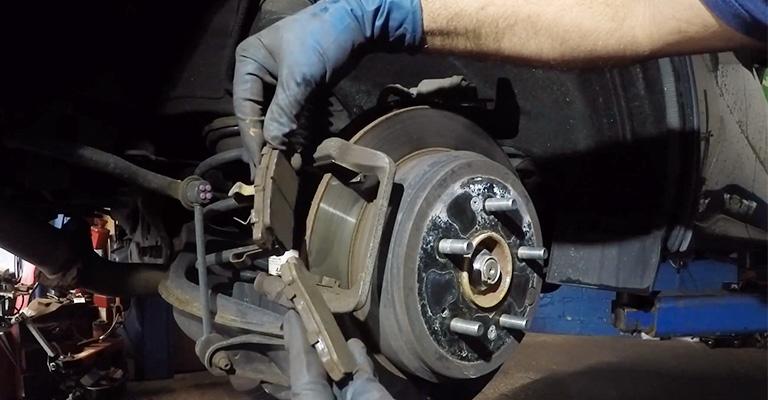
Contents
- 1 Why Do The Rear Brakes Wear Out First?
- 1.1 Causes Of Uneven Brake Pad Wear
- 1.2 Is It Normal For My Rear Brake Pads To Wear Out Faster Than My Front Brake Pads?
- 1.3 Uneven Brake Pad Wear Isn’t Always Normal
- 1.4 How To Repair These Issues?
- 1.5 How Long Should Rear Brakes Last?
- 1.6 Is The Handbrake Fully Released?
- 1.7 Is It Possible To Change Brake Pads Only On One Side?
- 2 Final Words
Why Do The Rear Brakes Wear Out First?
Whenever the tires are rotated, or every two years, the brakes should be checked. Depending on the driving conditions, some vehicles’ rear brakes will wear out before their front brakes due to their smaller size.
There are many reasons why one rear brake pad wears to metal contact. The brake caliper piston might be stuck, brake slide pins might be dirty and sticking, or the brake flex hose may be restricted. All vehicle systems can be adversely affected by hot weather.
A fraction of a second before the front brakes are applied in modern vehicles with stability control; the rear brakes are applied. The cost adds up in stop-and-go traffic. The rear brakes are activated when there is even the slightest slippage in RWD vehicles.
Even on dry pavement, a 90° turn will cause this wear. It is estimated that the rear brakes are applied thousands of times a year without you noticing. Now, rear brakes wear out faster than the front ones.
Causes Of Uneven Brake Pad Wear
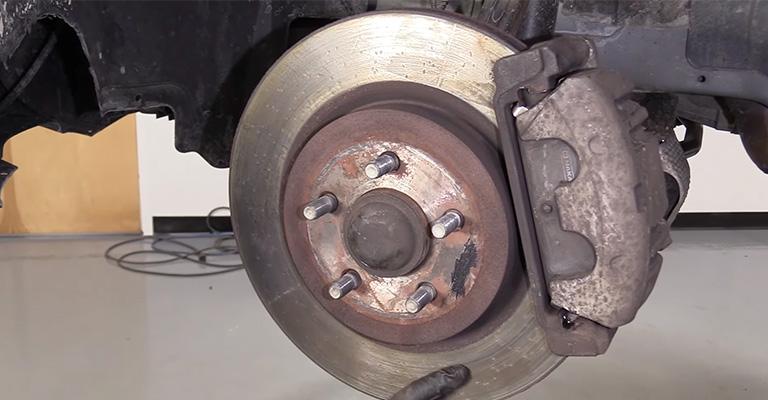
Brake pads wear differently on the front and rear wheels. Front brakes wear faster than rear brakes when your vehicle moves, as the forward momentum exerts more pressure on them.
It is more complicated if the brake pads on one side of your vehicle are wearing faster than those on the other.
1. Brake Pad Misalignment
Brake pads must be aligned evenly so that the rotor squeezes the entire pad. It is possible, however, for brake pads to become misaligned from time to time.
2. Rotor Surface Issues
Disc Thickness Variation (DTV) occurs when brake rotors wear unevenly. Dirt and debris can get stuck between the pad and the rotor, causing DTV. Possible causes include sticking calipers, rust, slamming the brakes frequently, or sticking calipers.
3. Brake Caliper Issues
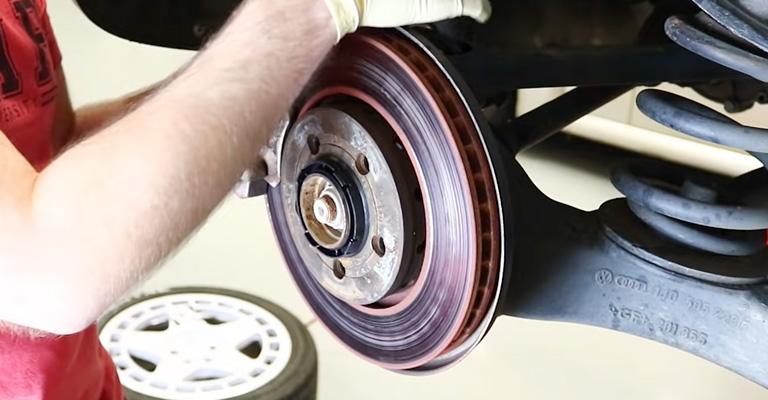
For the car’s wheels to slow down and the vehicle to stop, the brake caliper must push the brake pads against the rotors.
The brake calipers can sometimes become stuck, leading to brake pads that wear down more rapidly because they are pressed against the rotors.
Is It Normal For My Rear Brake Pads To Wear Out Faster Than My Front Brake Pads?
In addition to checking your oil and tires, ensuring that your brakes are in good working order is another important maintenance task.
It is more difficult to stop safely if brake pads wear too much, and you risk damaging the rotors. However, even modern brake technology can’t compensate for uneven pad wear.
Modern safety technology is sometimes to blame for this. Most of the time, the front ones wear out first. During braking, the car’s weight shifts forward, requiring stronger front rotors.
Traction and electronic stability control can lead to rear brake pads wearing faster than expected. ABS is linked to your ESC, traction control, and the tire-pressure monitoring system (for some cars). Various sensors, including those in your braking system, are connected to the two systems.
Wheelspin is controlled by traction control, while handling is controlled by electronic stability control. When the car senses that it is out of control, it automatically applies specific brakes to get it back under control.
As a result, ESC also improves a car’s handling. The rear brake pads play a key role in this. Understeer can be prevented and turns tightened by braking the rear wheels.
The basic principles are similar to torque-vectoring or limited-slip differentials, but it’s not the same. Additionally, rear-wheel braking reduces the tendency for forward diving.
In addition, since rear brake pads are usually subjected to less force than front ones, they tend to be thinner. With traction control and electronic stability control, rear brake pads wear more quickly.
Uneven Brake Pad Wear Isn’t Always Normal
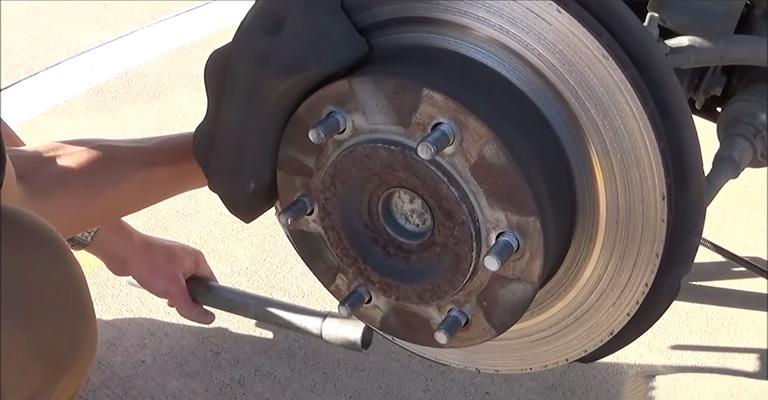
This uneven wear may also be caused by uneven rotor surfaces, which cause uneven pad wear. Pedal vibration, excessive noise, and extensive rotor scoring indicate an uneven or warped rotor.
It is also possible to detect other potential problems by examining the worn brake pads. In the case of worn inner pads, the piston in the caliper isn’t backing off properly, causing the pad to stay in contact with the rotor.
If the outer pad wears out, it doesn’t back out with the caliper after releasing the pedal. In addition, the pads may taper, the pads may be misaligned, or the components of the caliper may seize.
How To Repair These Issues?
Changing the surface of the rotor back to an even thickness is the easiest solution if the rotor is the problem. Eventually, however, the rotor will become too thin to be effective if you repeat this process constantly. The only option then is to replace the device.
Adding a new rubber piston seal, replacing a slide pin, or replacing the entire brake caliper may be necessary if it’s an issue with the brake caliper itself. Ensure none of the brake hoses are leaking – it may also be your brake lines causing the issue.
Be sure to replace both brake pads on each axle and install new retaining hardware if it’s a misaligned brake pad. It will continue to wear unevenly, or it will get worse.
How Long Should Rear Brakes Last?
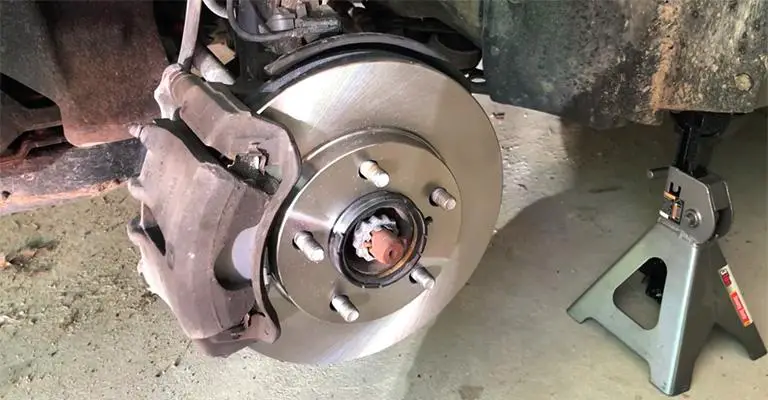
Keep your brake pads in good shape by replacing them every 10,000 to 20,000 miles. You have a bit longer when it comes to your rotors. Rotor replacement is recommended between 50,000 and 70,000 miles to keep your brakes performing at their best.
Is The Handbrake Fully Released?
There is a brake proportioning valve on every car. In this system, either the rear brakes are limited, or a load valve connected to the rear anti-roll bar reduces the pressure on the rear brakes.
You don’t use the back brakes much if you never have passengers in the back seat or loads in the trunk or boot. As a result, they can stick on and wear out much more quickly.
A vehicle’s total weight is distributed among all its wheels when in motion. The front wheel of a car bears most of the weight when braking.
Is It Possible To Change Brake Pads Only On One Side?
Changing your brake pads on one side only is not recommended. Even though it may be tempting to replace only one side of the brake pads, this will only cause further uneven wear and may even be dangerous. It would be best if you typically replaced both front and rear brake pads when you replace your brake pads.
Final Words
You cannot operate your vehicle without brake pads. In other words, if one set wears out faster than the other, you might have to replace them sooner rather than later.
